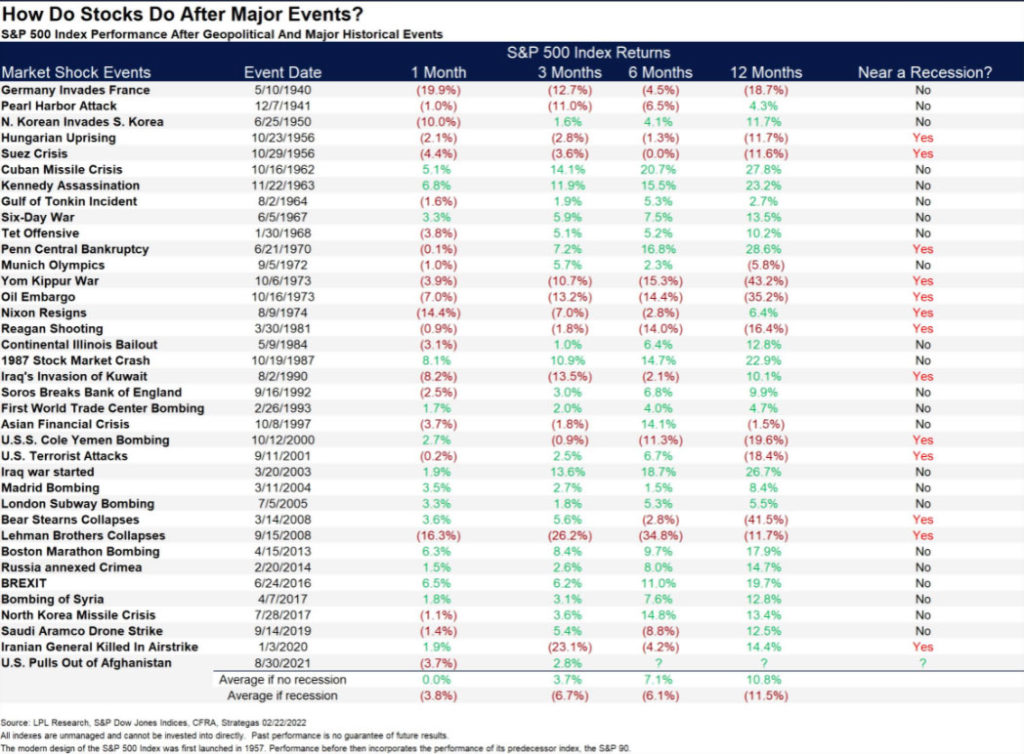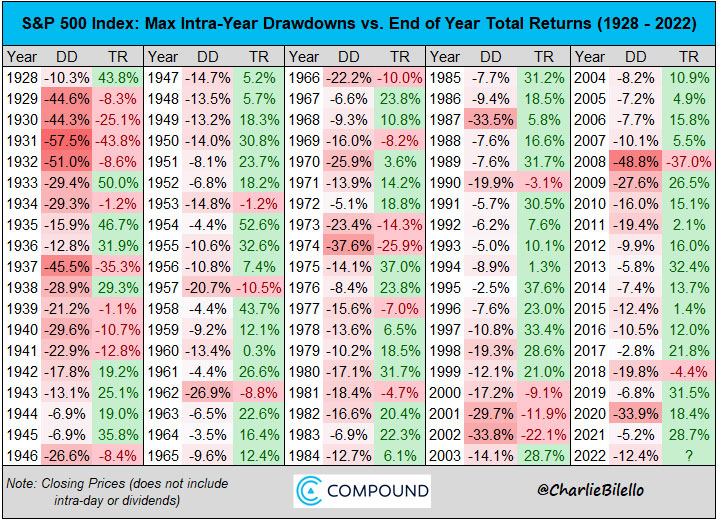
How Markets Tend to React After Major Geopolitical Events By Van Tharp Trading Institute
“Uncertainty actually is the friend of the buyer of long-term values.” – Warren Buffett
The overwhelming amount of turmoil in the world right now is sending the financial markets through neck-snapping reversals. Some happen in overnight markets as events of armed conflict in Europe unfold. But we are also getting monstrous intraday swings both up and down every time a little bit of pertinent news comes out. New information out of Ukraine will send the market one direction. A U.S. central bank rumor will send it on a U-turn the opposite way. Inflation, supply chain upsets, employment news, and yes, covid updates all have the potential to send the markets up or down by percentage points at a time.
There are two big news items that the market seems to be reacting to the most. One is the true uncertainty arising from the ongoing armed conflict in Ukraine. And, the second is the inflationary pressures that continue to mount after two years of a global pandemic. Both will keep the markets on a roller coaster ride for the near future.
That’s why I thought it would be both interesting and useful to seek out a slightly longer perspective on how markets react to major geopolitical events. The list below was generated by LPL Financial and is admittedly a bit U.S.-centric (it was, after all, compiled by an American firm). But it has a broad enough range of events that it gives us some practical insight into how traders and investors might want to set expectations in the markets, given the current military actions.
The bottom line? If a major event happens near an economic recession, returns over the following four quarters are quite negative. If the event does not take place near a recession (or doesn’t lead to one in the near-term) then the following year is a mirror image – quite positive, on average.
A final note on the correction the market has seen so far: The drawdown that the S&P 500 has seen this year (so far) was -12.4% as of Monday’s close of this week (March 7th). The short time it took for the drop to happen and the turmoil surrounding it has, in many ways, made it seem worse than it is. For some historical perspective: the median annual drawdown dating all the way back to 1928 is -13%.
Perhaps a more important takeaway from this data table compilation is this: there are usually some really excellent opportunities to put cash back to work in the markets when a price shock has roiled markets.
Van Tharp Trading Institute Peak Performance Course for Investors Traders



